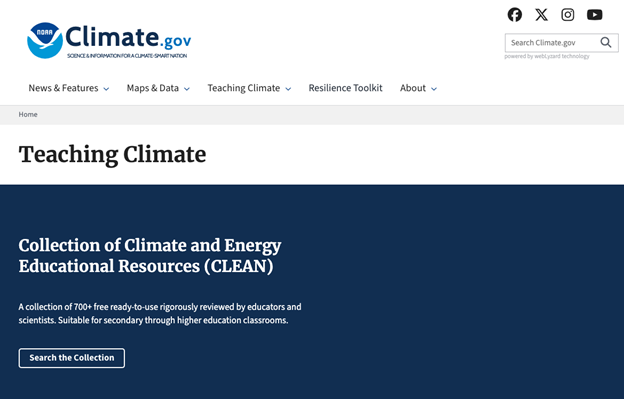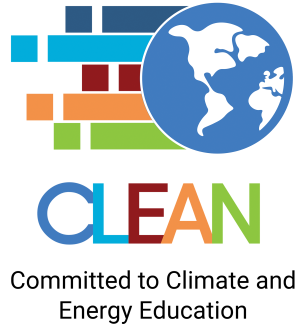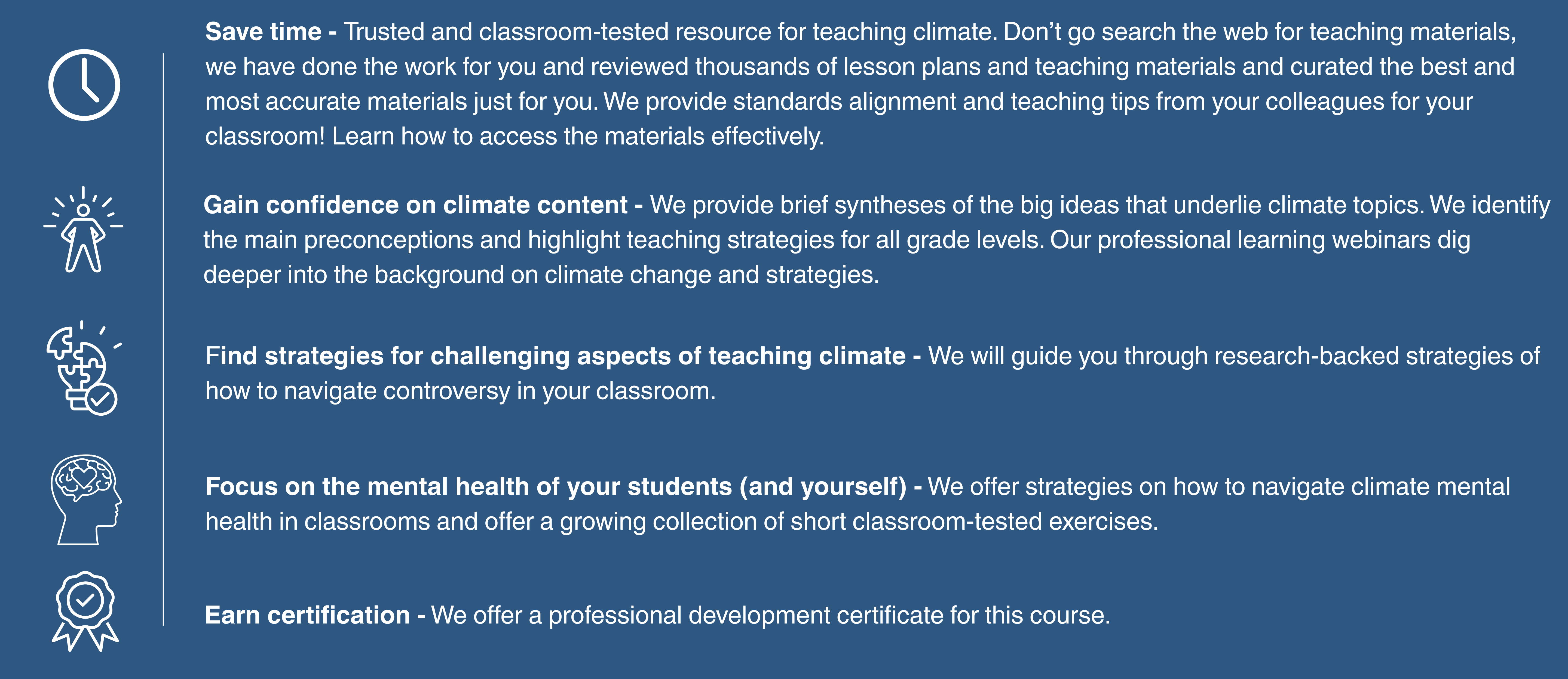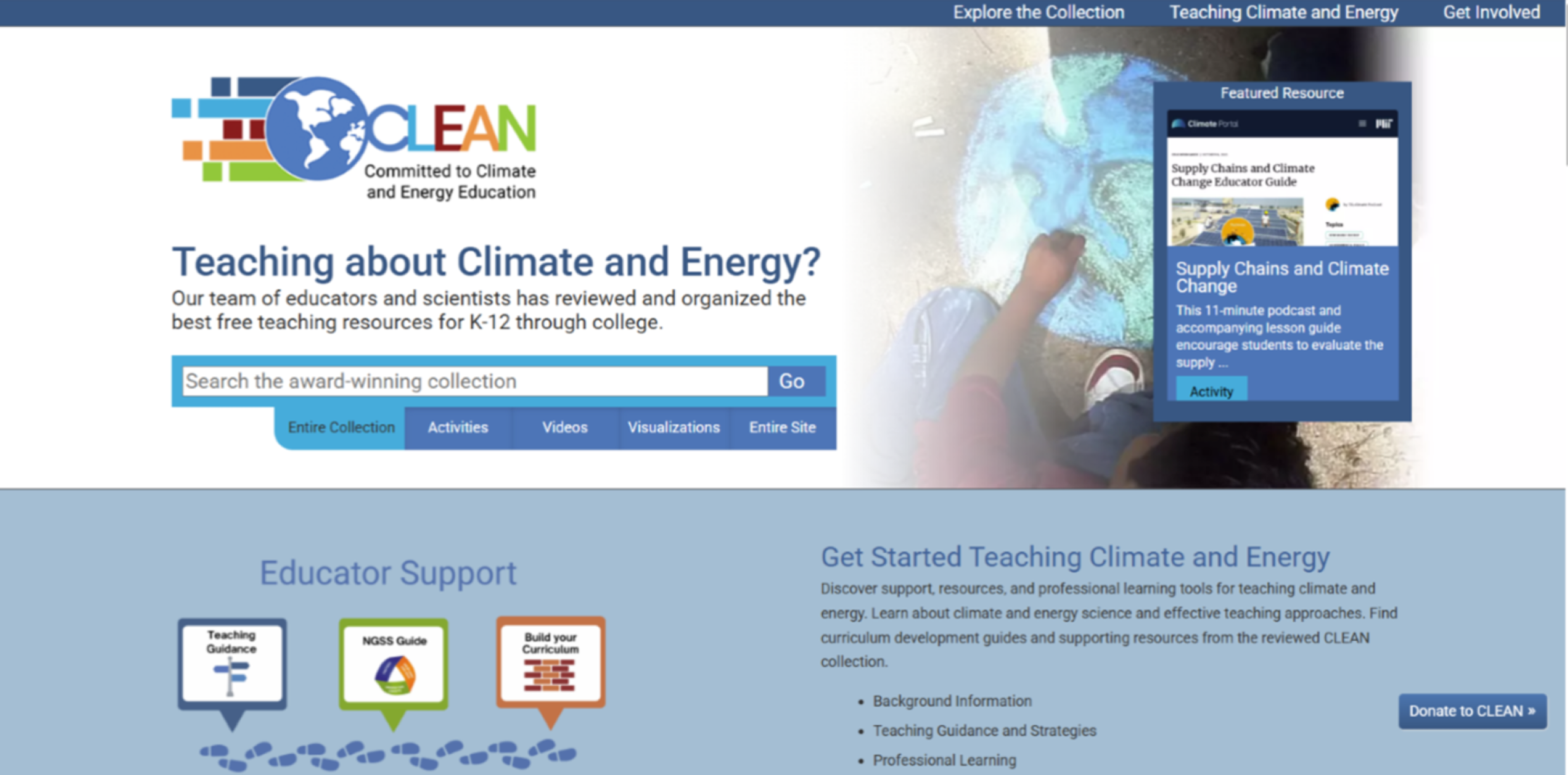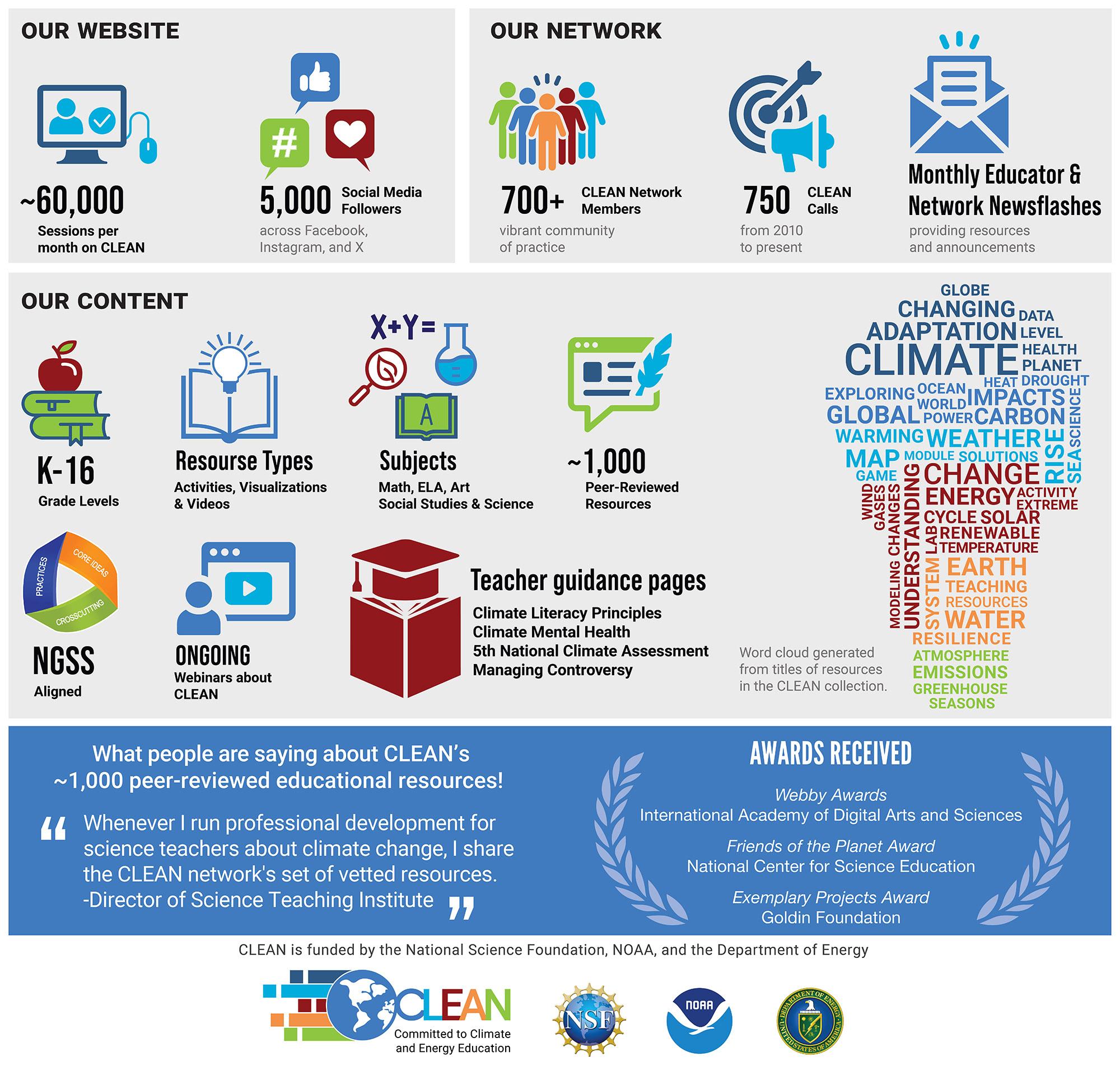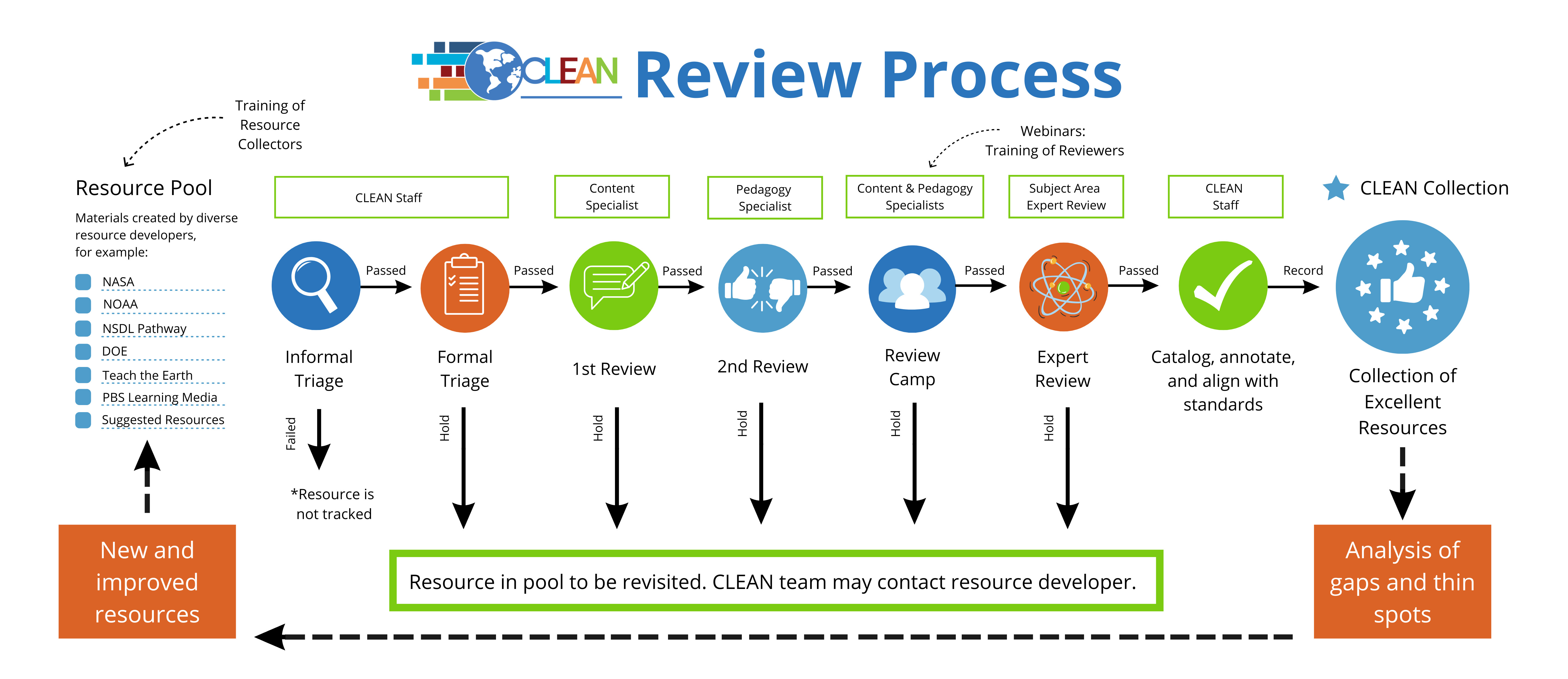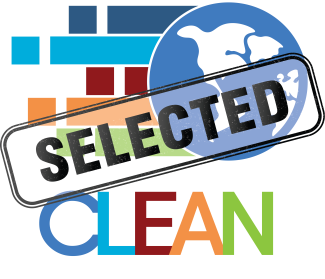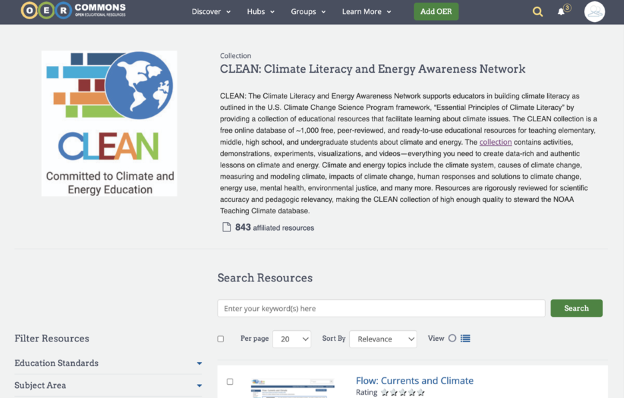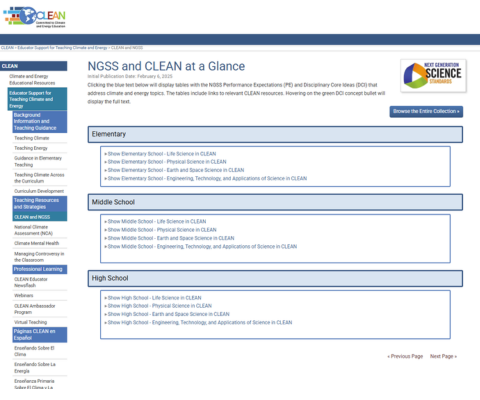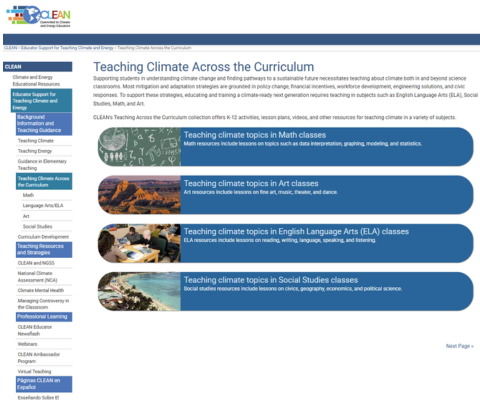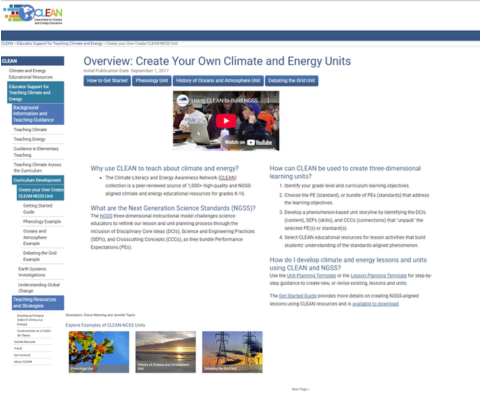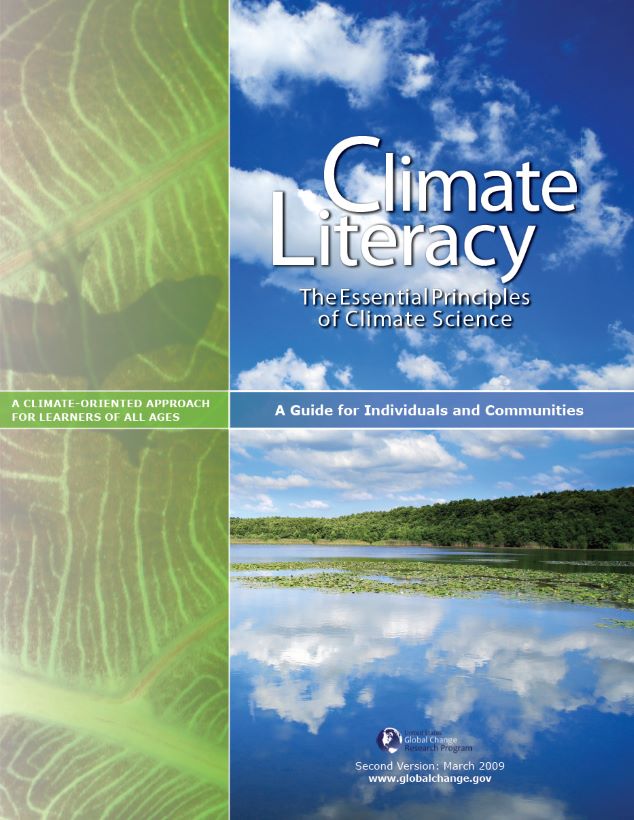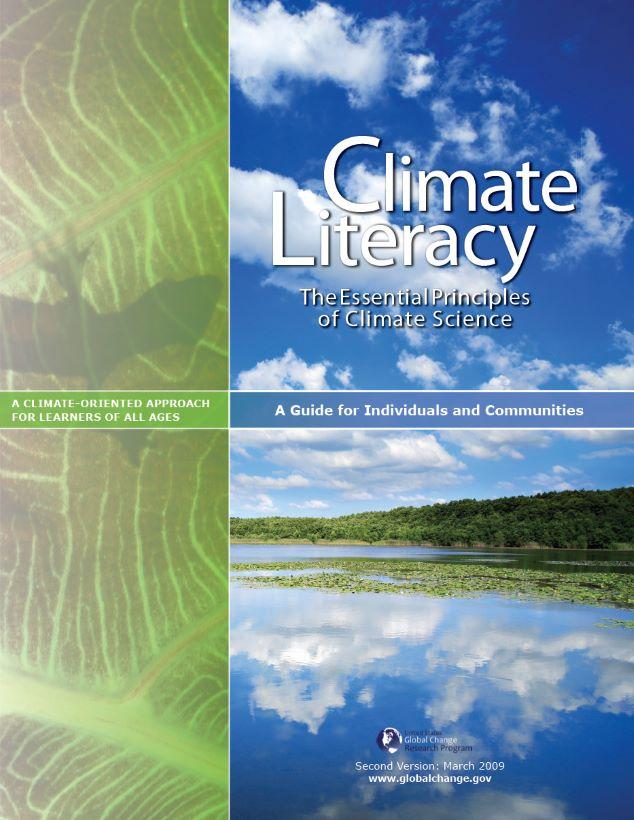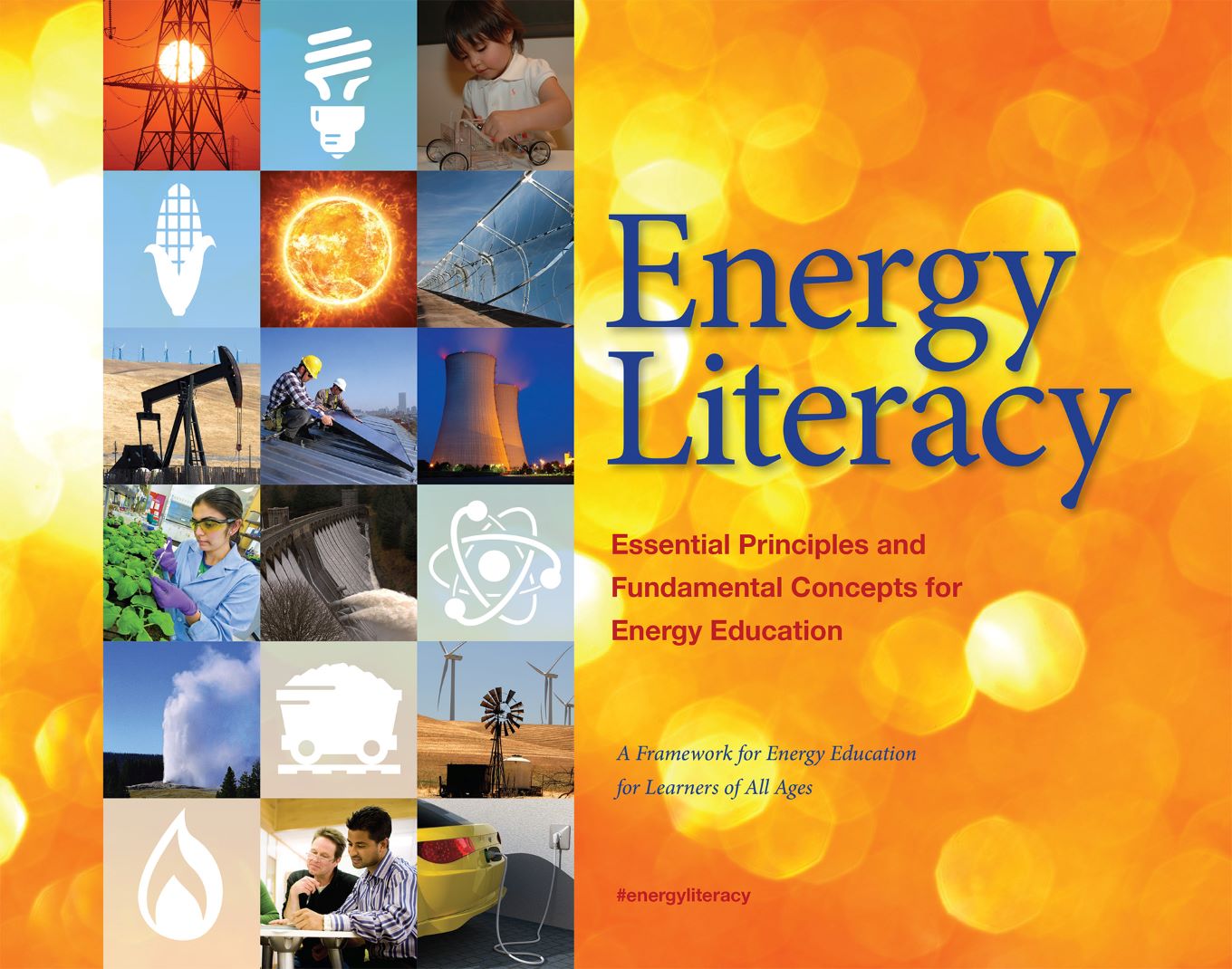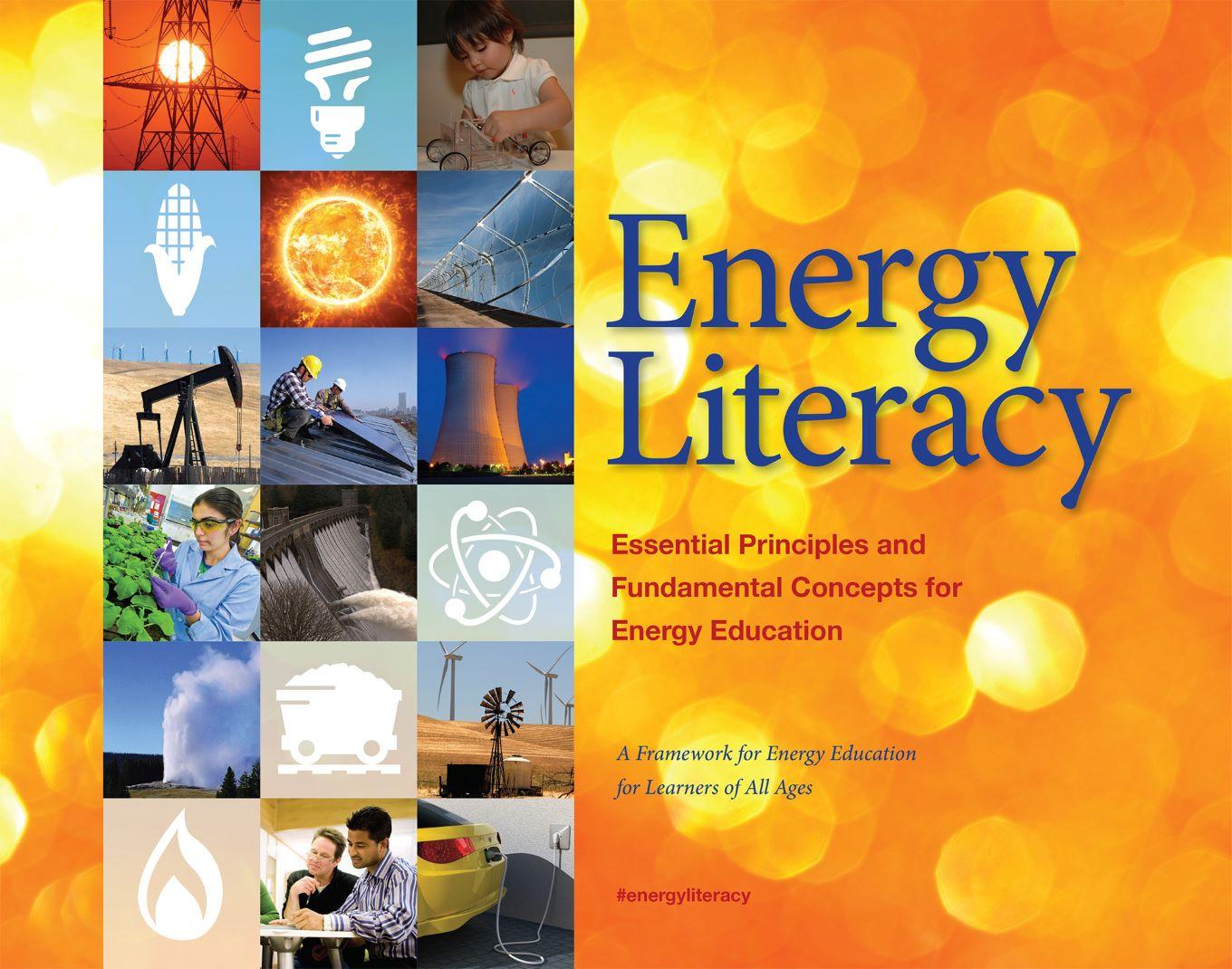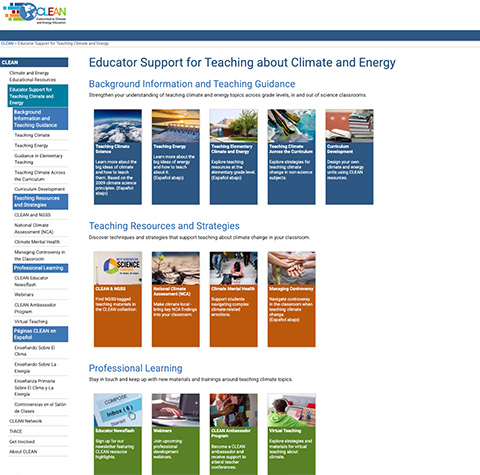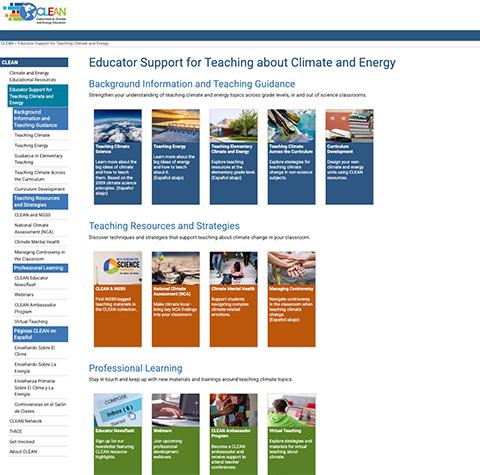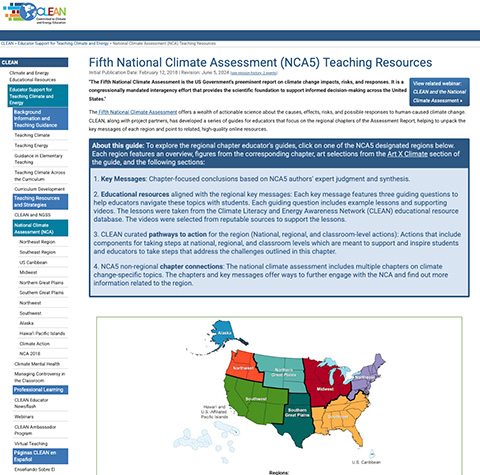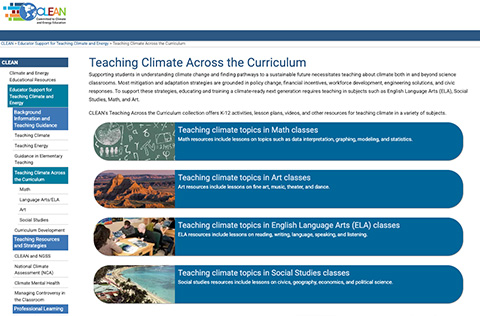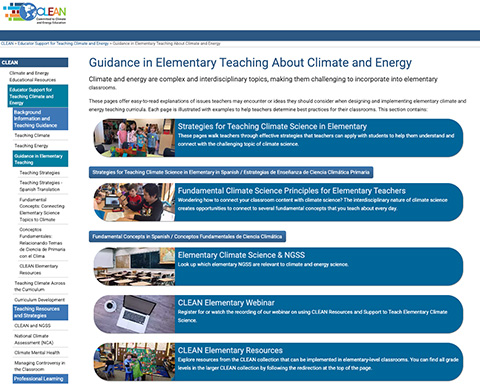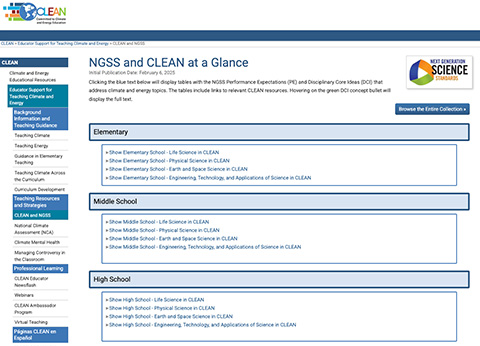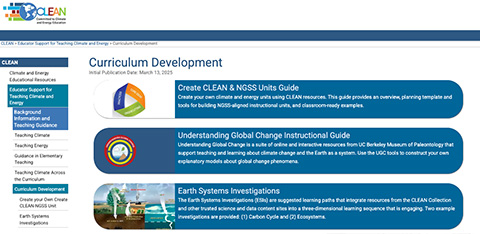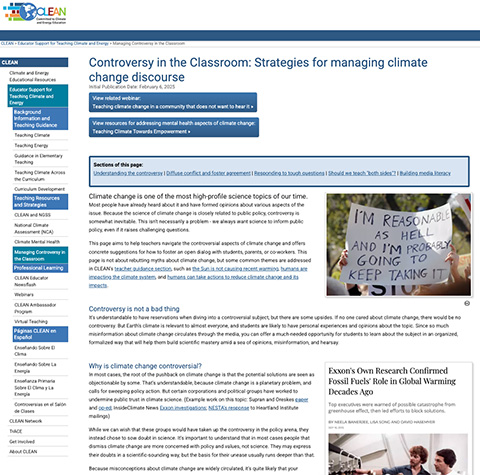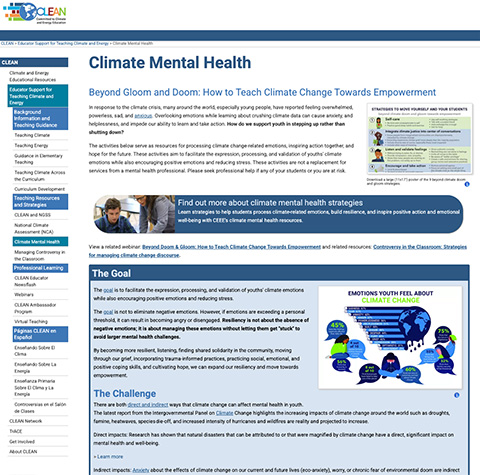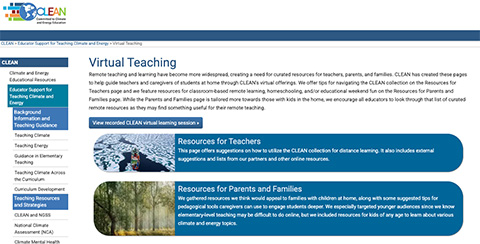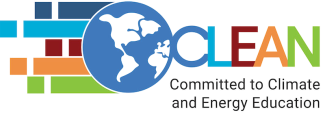The CLEAN collection provides a database of 800+ resources for teaching about climate and energy topics, including videos, data visualizations, simulations, lesson plans, and demonstrations. Resources in CLEAN are freely available, hand-picked, peer-reviewed, scientifically accurate, classroom-ready and individually tagged to make it easy what you are looking for in seconds. Each resource page includes a summary description of the resource and notes from the reviewers to provide additional information about the materials or teaching tips.
The collection can be searched by a simple open text search either on the front page of CLEAN or on the main collection overview page, or by using filter options on the right side of the main collection search page. You can filter the resource collection by resource type (activity, video, visualization etc.), grade level, the big ideas in climate and energy education (also referred to as the climate literacy and the energy literacy principles), teaching subject, climate and energy topics, NGSS standards, regional focus, scientific dataset use, and online readiness.
Are you interested in teaching climate across subject areas? CLEAN's Teaching Across the Curriculum collection offers activities, lesson plans, videos, and other resources for teaching climate in a variety of subjects such as English Language Arts (ELA), Social Studies, Math, and Art.
